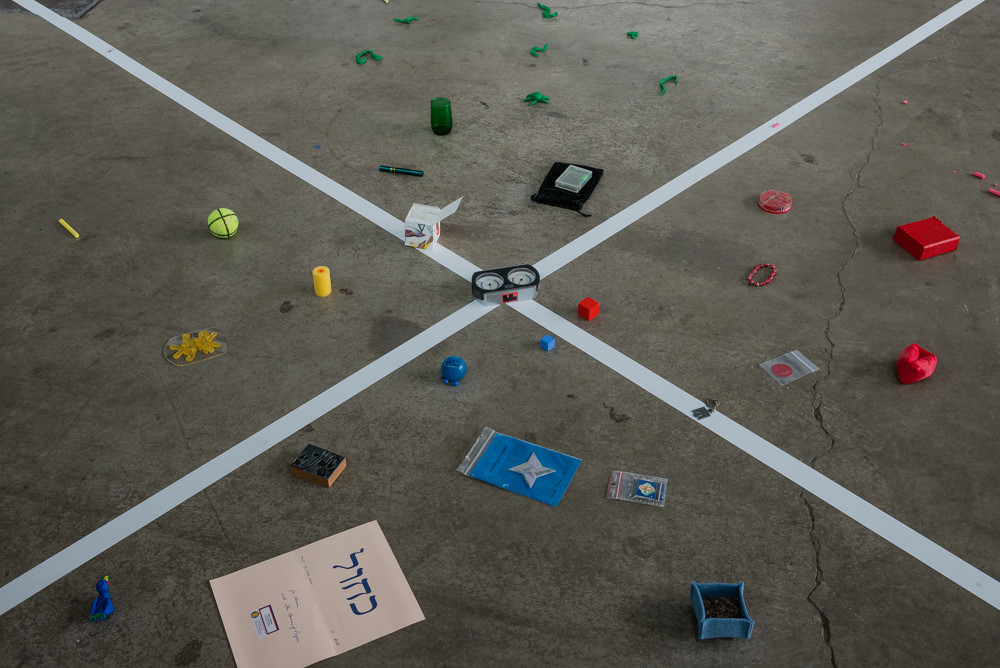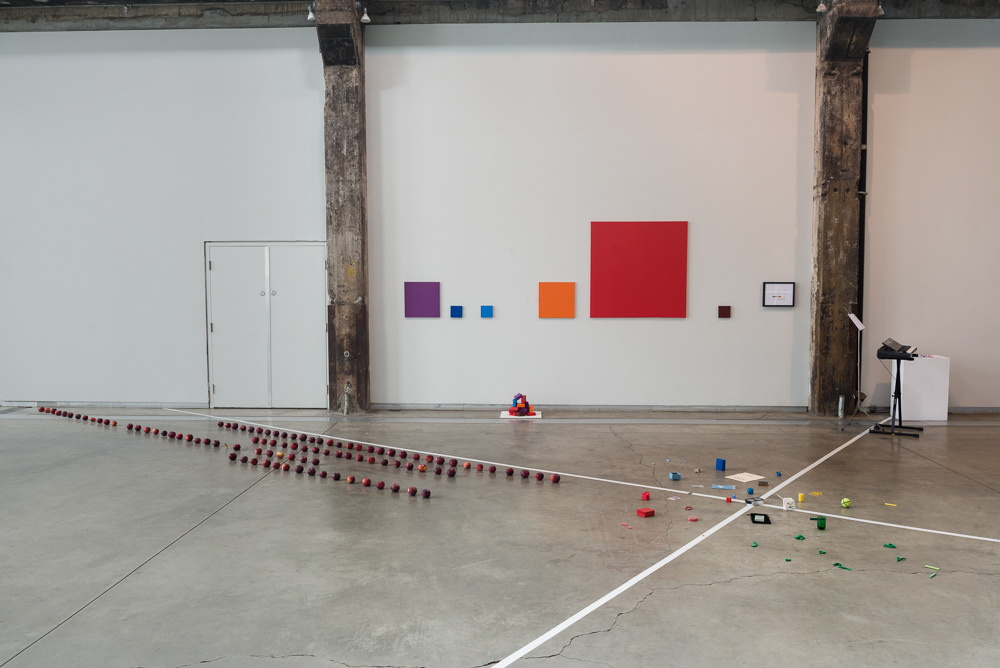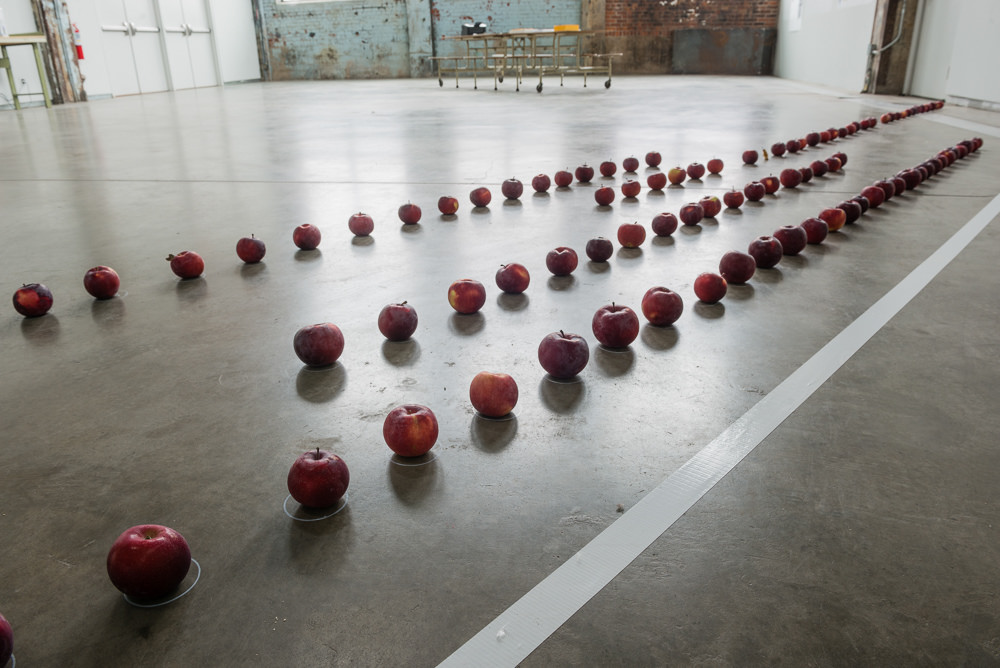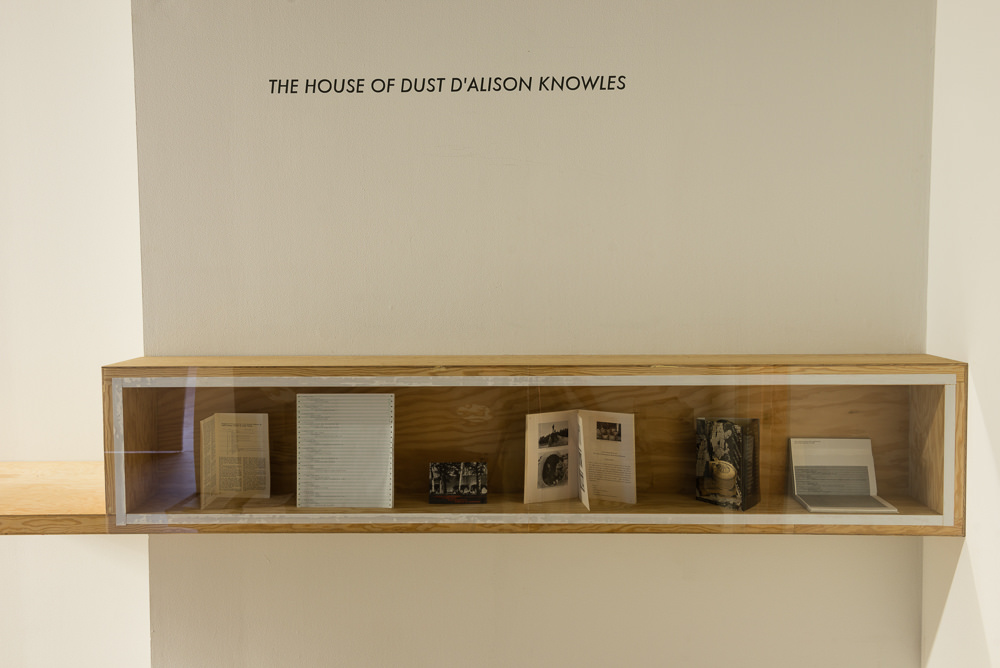The House of Dust by Alison Knowles
INHABITED BY BIRDS AND FISH
Alison Knowles, The House of Dust,1967-82
Archival documents
A room dedicated to the history and archives of Alison Knowles’ original work, The House of Dust. A video introduces the project, bringing together archival material from Alison Knowles’ personal holdings and multiple other sources. Through this video we learn about the trajectory of the work as it shifted forms from computer-generated poem, to architectural construction, to an open structure that generates artistic, pedagogical and practical responses from the surrounding community. Alongside this video a selection of original material from The House of Dust archives is exhibited. A reconstructed and updated version of the original The House of Dust Fortran program is continuously generating quatrains of the poem that are printed on a dot-matrix printer and accumulate throughout the duration of the exhibition. The installation of The House of Dust at CalArts saw the house become a focal point generative of the heightened avantgarde activities of the time. One example of this is Poem Drop, a piece realized by Norman C. Kaplan with the support of Alison Knowles, notably documented by Allan Kaprow. The exhibited video displays this original documentation of the action of dropping a poem from a helicopter flown above the House. A journal collecting archival material is also available for the public to take away, and includes texts and analysis by exhibition curators Maud Jacquin and Sebastien Pluot, alongside contributions by invited art historians and authors Benjamin Buchloh, Hannah Higgins, and Janet Sarbanes.
Alison Knowles, Gift Objects for The House of Dust, 1970/2017
Objects donated to The House of Dust
Throughout the different incarnations of The House of Dust, Alison Knowles devised various protocols to activate the house by local residents, her students and the artistic and pedagogical community. Among these protocols was a quadrant following the four cardinal directions that she drew in the vicinity of the house. On several occasions, Knowles collected and solicited gifts of objects from neighbours, community members, and her extended network of artistfriends affiliated with Fluxus. These collected and disparate objects were either affixed to the surface of the house or, when the house later disappeared, combined with quatrains of the poem and placed upon a quadrant. For the current exhibition, Alison Knowles has revived and revised this particular protocol and the quadrant format. In response to the specific quatrain from the HoD poem selected by A Constructed World, Alison has invited friends, artists, and notable Fluxus members to contribute objects according to the following specifications: size – to fit the human hand; colour – predominantly blue, green, red or yellow; nature – non-perishable. These objects will be arranged on the quadrant and organized according to colour.
Alison Knowles, 99 Red South, 1970/2017
During the same time that The House of Dust was installed at CalArts, Alison developed another computer program that generated random combinations of direction, colour, and quantity. With these resultant scores, Alison invited artists and the extended community of students and faculty of CalArts to interpret these parameters in any preferred artistic form. One of Alison’s then-students, Matt Mullican, responded to this score by placing four roasted chickens on green grass and invited others to partake in eating them. Another student, Michael Bell, covered part of the interior of the house with blue pieces of paper he had collected in the streets. Alison herself interpreted 99 red north by arranging 99 red apples in lines oriented towards north. People were invited to take an apple and leave behind any object they wished in exchange. This action is notable for being one of the earliest artworks using gift-exchange as a form of artistic relation. For the current exhibition this protocol has been re-enacted, this time orienting the apples towards south instead of north. Visitors are once again invited to leave an object in exchange for an apple.



